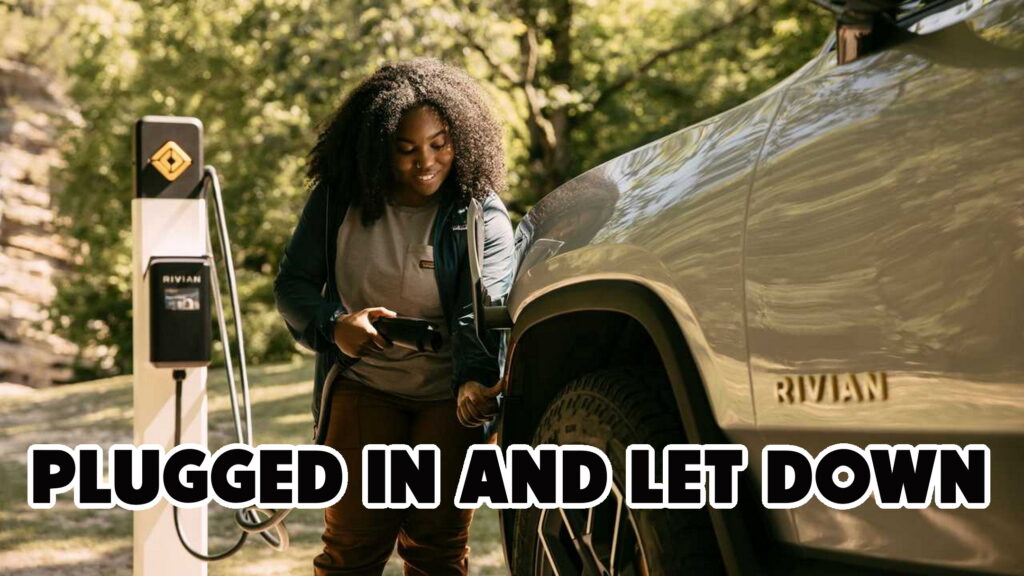Of all the drawbacks stereotypically levied at electric vehicles, charging and charging infrastructure remains perhaps the biggest. We’ve had our own issues with public charging in the past, but what happens when everything goes as planned? The experience of one Rivian R1T Max Pack owner demonstrates a key issue in the public charging system; real output.
A few months ago, we tested the new Audi Q8 e-tron and really enjoyed it. Sadly, we didn’t love the available charging network in Colorado where we drove the SUV. Some EV owners don’t have the same kind of problems though. They might find a functional fast charger readily available on a regular basis. Despite that, the post highlighted here shows why even that isn’t a cure-all.
X platform user @MissGoElectric recently posted about her new Rivian R1T Dual Motor Performance with the recently released Max Pack. She says she rolled up to the charger with just 1% of juice left in the battery and plugged in under ideal conditions. It was about 70 degrees outside and she had access to a 350kW DC Fast Charger at an Electrify America station.
More: The Fastest Charging EVs—And Only One In The Top 10 Is From Tesla
Rivian’s Max Pack is good for 180 kWh of energy storage, so in theory, it would sound like you could go from 0-100% in well under an hour on such a fast charger. Sadly, that’s not how it works in real life. Instead, the charger meters out far less juice than its 350kW label might have one believe. In the case of this R1T owner, it started her off at 198kW and then peaked when she was at 16% state of charge (SOC) with 204 kW. She says that within ten minutes she had 20% battery or about 80 miles worth of range.
According to the calculations, she should’ve been topped up in no more than 50 minutes. Instead, the charging speed dropped considerably. From 30% to 65% it peaked at 183 kW but largely stayed below 150 kW. At 67% SOC she saw the rate drop further to just 109 kW. It took 38 minutes to reach a 70% SOC. It took another ten minutes to get to 80% SOC. By the time she got to 85%, the charge rate was below 50kW and the R1T estimated it would take a further 1 hour and 8 minutes to get to 100%.
Notably, this is a very large battery pack that still offered 352 miles of range at 85% state of charge (SOC). All EV batteries tend to slow down after about 80%, so to be very clear, this isn’t to condemn Rivian or any other EV automaker out there. Many battery electric vehicles, including the R1T, are remarkable and deserve genuine recognition, especially for their fast charging capabilities. The issue has been and continues to be how inconsistent the charging experience can be. For now, the solution appears to still be to have a way to charge a vehicle at home overnight. That provides far more consistent, albeit far from DC Fast Charging results.





 Details in the thread below
Details in the thread below 